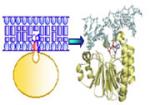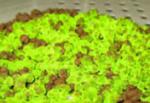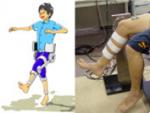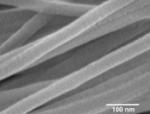View All
Mechanism of enzyme-substrate interaction
2010.03.18.
[Bioscience and Biotechnology Course ]
Using the genetic and the protein engineering techniques, it has been elucidated how DNA repair enzyme (AP endonuclease) finds out damages of chromosomal DNA (Published in Nucleic Acids Res, 2006). New knowledge is provided about an enzyme/substrate complexation mechanism and can apply it to medicine designs based on three-dimensional structure information of the enzyme.
Culture of Luminous moss
2010.03.18.
[Bioscience and Biotechnology Course ]
The luminous moss (Schistostega pennata), which is known as its green luminous reflection, is rarely found in the cave of mountainside. It is on the verge of extinction by the effect of environmental disruption. We have successfully cultured the luminous moss in vitro (patent application, 2005). The photograph shows green fluorescence of the cultured luminous moss.
Self-recycle Products
2010.03.18.
Based on a concept of “self-recycle”, a number of problems with medical materials and cosmetics will be solved using self-originating biomaterial products instead of synthetic or non-self originating materials. From this point, human hair and nail are valuable sources to create safe and biocompatible products, because they are easily collected in large quantities from specific individuals and the protein contents are high. They developed novel procedures of protein extraction and film formation from these tissues.
Robotic Suite integrated with a human body
2010.03.18.
Our goal is to propose a framework using synchronization based control for a robotic suit which is integrated with the human body and provides suitable help for lower limb motion in aged persons engaged in daily activity and rehabilitation. Bio-information and neural oscillators are introduced for accomplishing the synchronization and entrainment between human and robot motions.
Highly Functional Fibers and High Performance Fibers
2010.03.18.
[Functional Polymer Science Course]
Prof. Dr. Ohkoshi and his co-workers has developed developed the production technology of ultrafine fibers (less than 40 nm diameter) by drawing using the laser-heating system. By use of the laser heating, not only the increase of production rate, but also the cut down on the energy loss on fiber production, which save the earth, are obtained. By the production system, new high-performance fibers, for example the nano-fibers are developing in rapid succession.










